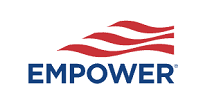Wouldn’t it be amazing if you never had to worry about making money ever again? For some people, this dream is a reality.
For others, it’s a reality they’re working towards reaching sooner rather than later. In fact, there is a whole movement called the FIRE movement that revolves around this concept.
No matter whether you’re already planning for early retirement or just dipping your toes into the idea, here’s everything you need to know about FIRE: what it is, how it works, and most importantly, how to achieve it for yourself.
What’s Ahead:
What is the FIRE movement?
FIRE stands for “financial independence, retire early” and has turned into a full-blown movement with hundreds of thousands of followers, if not more.
People like Vicki Robin, Pete Adeney (better known as Mr. Money Mustache), and Brad Barrett and Jonathan Mendonsa are just a few of the personalities who have thrust the movement into the spotlight.
The basic idea is to create a situation where you have sufficient income from your investments or other passive sources to enable you to quit your job at any time. That doesn’t necessarily mean you will quit your job, but rather that you’ll have the option.
Many who achieve FIRE continue working, but often in very different occupations than they had early in life. Many others simply use the status to create an easier life that affords more time for personal pursuits, family, and travel.
Still, others who achieve FIRE take a year or two off to travel the world, then come home and start new ventures. The point is, once you achieve FIRE all those doors will be open to you.
Watch our quick 2-minute video about the FIRE movement and how to retire early.
While many people associate FI and RE together, it really boils down to two separate concepts:
- Financial independence is the ability to no longer need to work for additional money.
- Retiring early is the act of no longer working.
But you don’t have to apply both of these concepts. Here’s what you need to know about each.
Financial independence
The first part of the FIRE movement is financial independence. This is essentially the concept of never having to work again for money if you don’t want to.
For many, this idea seems insane and impossible to make happen. But it’s totally possible to achieve.
How? Well, the answer will vary from person to person, but financial independence is commonly cited as having 25x your annual expenses in investments. This also works out to 300x your monthly expenses.
This is a benchmark that comes from the 4% rule. The theory behind this rule holds that if your portfolio is invested in a mix of stocks and bonds, you’ll be able to withdraw 4% of the portfolio each year with good odds of not running out of money before the end of a typical 30-year retirement.
Based on that rate, you can calculate the needed size of your portfolio to be 25x your annual cost of living.
For example, let’s say you need $50,000 per year to sustain the lifestyle you want. Using the withdrawal rate of 4%, you multiply $50,000 by 25, giving you $1.25 million.
That’s how much money you’ll need in your portfolio to produce the $50,000 annual income you’ll need in retirement.
Unfortunately, reaching financial independence early means you may need the money to last more than 30 years. Due to this fact, some people use a smaller initial withdrawal rate, such as 3%, to calculate their financial independence number. This requires a person to have 33.3x their annual expenses to reach financial independence.
Plug your own numbers into our FIRE Calculator to see how early you can retire.
Retire early
When you talk about retirement, you likely think of never working again. You probably imagine grabbing a beach chair, sipping your favorite beverage and watching the waves roll onto the beach. Others may dream of RVing across the country or traveling the world.
Traditionally, people associate reaching Social Security age to be a normal retirement. If you can retire in your 50s, 40s, or even earlier, that’s considered retiring early. The second part of the FIRE movement focuses on the act of actually retiring from your career early.
But reaching financial independence doesn’t mean you have to stop working. Many people continue building businesses or switch to another more fulfilling career after they reach financial independence.
Read more: How much should you save for retirement?
How to reach FIRE
If achieving financial independence, early retirement, or both sounds appealing to you, getting there is easier than you’d imagine. Ultimately achieving FIRE boils down to three simple steps: cutting your expenses, growing your income, and investing.
1. Cut expenses

Source: Giphy.com
For most people, you’ll need to be able to save between 25% and 50% of your after-tax income to be able to retire in less than, say, 20 years. The exact percentage will depend on how much you’ll need to reach your goal. Naturally, if you expect to retire in 15 years, the percentage will need to be higher.
Cutting expenses is an extremely powerful move when you’re first getting started on your FIRE journey. Cutting out $100 a month of expenses lowers the amount you’ll need to reach financial independence by $30,000.
The other great benefit of cutting your expenses means you’ll have more money available to invest each month. This helps you speed up the accumulation of your investments, which helps you reach financial independence even faster.
Doing this will likely involve more than just clipping coupons and eliminating unneeded subscriptions. More likely, you’ll have to live in a home that’s much less expensive than the home you technically can afford. You’ll also need to drive a much less expensive car. And you may need to forgo expensive vacations, frequent restaurant meals, and hobby spending.
Don’t get too extreme, though
You shouldn’t be cutting expenses to an extreme unless you love living that extreme lifestyle. Instead, consider cutting expenses you don’t value and keep the expenses that make your life easier or more fun.
At some point, you’ll reach a number for your monthly expenses where cutting any other expense doesn’t make sense and would instead make your life miserable.
Read more: 6 ways to trick yourself into saving more and spending less
2. Increase your income

Source: Giphy.com
While reducing your expenses is a quick win, there’s a better way to reach financial independence faster, and that’s by increasing your income.
Maybe that means finding a new job that pays more. Or asking your current employer for a raise. Or you could start a business that generates an additional income stream. I personally know people who have ended up earning $1,000,000 or more per year. You could also start a small side hustle to make extra money doing something you love.
Read more: 30 businesses to start with little money
Spoiler alert: One of the best ways to reach FIRE is to use a combination of lowering your living expenses and increasing your income. If you can reach a point where you can save 50% or more of your after-tax income, you’ll reach your goal much more quickly.
3. Invest
If you’re going to reach your FIRE goal it won’t be enough to simply park your money in a savings account and call it a day. Or worse, to leave it in your checking account, where its real value will gradually be eroded by inflation.
You’ll need to hold some money in a high-yield savings account — after all, everyone needs an emergency fund.
Read more: Best high-yield savings accounts
But you’re only likely to earn roughly a 2% return in those accounts. Rather, the majority of your money will need to be invested in stocks. If you invest your money in a broad market index fund, it isn’t unheard of to get an 8% annual return over a long period, such as 20 years or more.

Source: Giphy.com
In fact, based on the S&P 500, stocks have actually returned 10% per year on average, going all the way back to 1926. That kind of return is the reason why stocks will need to dominate your portfolio.
Naturally, there’s more risk when you invest in stocks than in safe bank assets. But this risk is minimized when you’re investing for a decade or more.
If you aren’t comfortable managing your own investments, a robo-advisor can help you get started.
Read more: How to invest in stocks: The beginner’s guide to the stock market
Here are three quick charts showing you how much you’d end up with at the end of various time periods by earning 2% and 8% annual returns. The first chart assumes a 10-year time frame, the second a 20-year time frame, and the third a 30-year time frame. The difference is shocking.
10-year time frame
| Amount invested | Assuming 2% annual return over 10 years | Assuming 8% annual return over 10 years | Difference |
|---|---|---|---|
| $500/mo | $67,012 | $93,872 | $26,860 |
| $1,000/mo | $134,024 | $187,745 | $53,721 |
| $1,500/mo | $201,036 | $281,618 | $80,582 |
| $2,000/mo | $268,049 | $375,491 | $107,442 |
| $2,500/mo | $335,061 | $469,364 | $134,303 |
20-year time frame
| Amount invested | Assuming 2% annual return over 10 years | Assuming 8% annual return over 10 years | Difference |
|---|---|---|---|
| $500/mo | $148,699 | $296,537 | $147,838 |
| $1,000/mo | $297,399 | $593,075 | $295,676 |
| $1,500/mo | $446,099 | $889,612 | $443,513 |
| $2,000/mo | $594,799 | $1,186,150 | $591,351 |
| $2,500/mo | $743,499 | $1,482,687 | $739,188 |
30-year time frame
| Amount invested | Assuming 2% annual return over 10 years | Assuming 8% annual return over 10 years | Difference |
|---|---|---|---|
| $500/mo | $248,276 | $734,075 | $485,799 |
| $1,000/mo | $496,553 | $1,468,150 | $971,597 |
| $1,500/mo | $744,829 | $2,202,225 | $1,457,396 |
| $2,000/mo | $993,106 | $2,936,300 | $1,943,194 |
| $2,500/mo | $1,241,383 | $3,670,375 | $2,428,992 |
Investing platforms to help you reach FIRE
If you’re serious about achieving FIRE, you’ll need help along the way. That will start with one or more top-level investment platforms. After all, while half the FIRE effort is saving an outsized amount of money, the other half is investing it successfully. The right investing platform can make all the difference.
You can check out our full list of the best investment accounts for young investors, but here are four platforms I recommend to help you on your journey into FIRE:
Empower
 Empower offers two different versions. The free version serves primarily as a financial aggregator, where you can sync all your financial accounts on the platform. That will give you a high-altitude view of your finances, as well as provide limited budgeting capabilities.
Empower offers two different versions. The free version serves primarily as a financial aggregator, where you can sync all your financial accounts on the platform. That will give you a high-altitude view of your finances, as well as provide limited budgeting capabilities.
But the free version will also provide valuable investment tools, like the Retirement Planner, 401(k) Fee Analyzer, and the Investment Checkup, that will do a one-time evaluation of your portfolio and make recommendations to improve your asset allocation.
If you prefer complete investment management, you can use the Empower Wealth Management service. For an annual management fee — and a minimum investment of $100,000 — they will provide you with human-guided investment management. The fee is higher than that charged by robo-advisors, but it’s well below what’s typically charged by traditional human-guided investment advisors.
One of the major advantages that sets Empower apart from other investment advisories is that they will provide investment advice on your employer-sponsored retirement plan. They won’t manage the plan for you, nor will there be any fees associated with the service. But they can help you with recommendations for lower fee options within your plan, as well as provide portfolio allocation recommendations.
(Personal Capital is now Empower)
J.P. Morgan Self-Directed Investing
 J.P. Morgan Self-Directed Investing gets you started on retiring with no minimum investment. You’ll manage your own portfolio, conducting commission-free trades directly in the app. You’ll have access to tools to help you research thousands of investments, giving yourself an edge as you save for your retirement.
J.P. Morgan Self-Directed Investing gets you started on retiring with no minimum investment. You’ll manage your own portfolio, conducting commission-free trades directly in the app. You’ll have access to tools to help you research thousands of investments, giving yourself an edge as you save for your retirement.
If you’d prefer expert guidance with your investments, and you have at least $500 to get started, you can instead use J.P. Morgan Automated Investing. Your portfolio will be put together and managed by J.P. Morgan’s team of experts.
To get started with J.P. Morgan Automated Investing, you’ll just create an account and answer some questions about your financial goals. You can then begin building and managing your portfolio from your computer or mobile device.
Read our full J.P. Morgan SDI review.
Disclosure – INVESTMENT AND INSURANCE PRODUCTS ARE: NOT A DEPOSIT • NOT FDIC INSURED • NO BANK GUARANTEE • MAY LOSE VALUEWealthfront
 Wealthfront is a robo-advisor, providing complete investment management for a very low fee. That management includes automatic reinvestment of dividends, periodic rebalancing, and various strategies to minimize the tax liability generated by investment activity.
Wealthfront is a robo-advisor, providing complete investment management for a very low fee. That management includes automatic reinvestment of dividends, periodic rebalancing, and various strategies to minimize the tax liability generated by investment activity.
You can open an account with just a few hundred dollars, making the service available for even the smallest investment portfolios. The annual management fee is also one of the lowest in the industry.
One of the big advantages they provide over other robo-advisors is in broader portfolio diversification. While most robo-advisors concentrate on a mix of US and international stocks and bonds, which Wealthfront does as well, they also add real estate and natural resources to the mix, which can improve portfolio performance when stocks are falling.
Wealthfront also allows for some customization to meet your FIRE goals on your own terms, by adding and removing ETFs of your choice. The Wealthfront Cash Account lets you set monthly expense and savings budgets, then sweeps your account to route additional cash into your chosen investment accounts. This can add a lot of momentum to your investing power so you can meet your financial goals more quickly.
Read our full Wealthfront review.
M1
 Like Wealthfront, M1 is a robo-advisor. But it’s quite possibly the most unique robo-advisor in the industry. That’s because M1 allows you to select your own investments, creating your own portfolios, then it manages them robo-advisor style. What’s more, you can open an account with no money, and there are no fees charged to manage your portfolio.
Like Wealthfront, M1 is a robo-advisor. But it’s quite possibly the most unique robo-advisor in the industry. That’s because M1 allows you to select your own investments, creating your own portfolios, then it manages them robo-advisor style. What’s more, you can open an account with no money, and there are no fees charged to manage your portfolio.
M1’s portfolios are referred to as “pies.” Each pie is built around a specific investment theme. You can create your own investment theme, or use one of the predesigned templates. Each pie can hold a mix of up to 100 individual stocks and exchange-traded funds. And there is no limit to the number of pies you can create within your account.
If you like the idea of selecting your own investments and creating your own portfolios, but you don’t want to spend the time and effort to manage them, M1 is the perfect investment platform for you.
The bottom line: Take action now
You don’t have to commit to a major lifestyle change to get started on your path to financial independence. While drastic moves may get you there faster, small changes over time that are sustainable will likely end in a better long-term result.
When you get started, it’s helpful to start tracking your net worth, your income, and your expenses so you can get an idea of how you’re progressing toward financial independence.
Once you’re tracking your progress and making changes to reach financial independence faster, it’s amazing to see how quickly you can make serious progress. Eventually, you may even be able to retire early.
Read more
- Start at 25, retire at 45: How to retire well after just 20 years of work
- Can’t retire early? Don’t worry, you’re not failing at money
Empower Personal Wealth, LLC (“EPW”) compensates Webpals Systems S. C LTD for new leads. Webpals Systems S. C LTD is not an investment client of Personal Capital Advisors Corporation or Empower Advisory Group, LLC.


